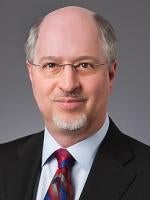Yesterday’s conference sessions surfaced interesting questions and approaches regarding the post-acute sector, bundled payment, emergency medicine and anesthesia.
Post-Acute Focus: With more and more focus on the need to rationalize and re-organize the post-acute sector, we have seen multiple industry leaders start to evolve their strategies. I blogged yesterday about AccentCare’s interesting strategy in the home health/personal care space, and United, through its Optum subsidiary, has been focused for several years now on rationalizing the post-acute continuum of care.
Yesterday, I was interested and surprised by TeamHealth’s presentation. With their $1.6 billion completed acquisition of hospitalist company IPC, I expected to hear more about bundled solutions selling in the acute inpatient market as a result of the IPC capabilities. Instead, the focus of the majority of the TeamHealth presentation was on the post-acute sector. They believe that the most valuable asset in the IPC portfolio is the post-acute service base. IPC currently provides SNFist and other services to approximately 2,400 of the current 15,000 post-acute facilities in the United States. Management of the post-acute sector is seen by TeamHealth as being integral to the acute hospital solution set, so as to better be able to coordinate care both in and beyond the hospital, succeed with value-based reimbursement, reduce leakage, position for bundled payments and service the patient throughout an episode of care. They are serious, noting that they generally would emphasizing post-acute acquisitions over hospitalist acquisitions in the near future. This approach also starts to de-risk TeamHealth from its high emergency medicine customer concentration. It also allows for value creation as the nation starts to move towards greater scale in bundled payment programs and allows TeamHealth to position better for sustaining margin with bundled payments (i.e., not just be a price-taker). The approach also is a potential response to the continuing payor consolidation in the market – by being relevant across more facilities and more service lines, there is a better opportunity for positioning with payors both regionally and nationally.
Bundled Payments: Clearly, bundled payments was one of the themes of the conference. In addition to the above with TeamHealth, both Kindred and HealthSouth were asked questions about possible impact on their business and margins from the implementation of bundled payment programs. As publicly reported in Modern Healthcare today, both companies indicated that very little of their current business would be impacted negatively, if at all, by the bundled payment programs.
Ambulatory Surgery Center please with a side of Physician Services: It was interesting to hear the AmSurg presentation yesterday and their characterization of the Sheridan acquisition. After relating how the growth in the number of ambulatory surgery centers (ASCs) was relatively flat currently, with about 1 ASC per acute hospital on average in the United States (about 5600 ASCs now, per AmSurg), AmSurg focused on the ability with Sheridan to capture revenue gaps and to provide more complete solution sets. On the revenue gaps, AmSurg noted in its presentation that the AmSurg ASC portfolio generates approximately $250 million per year in anesthesia revenue, and 95% of the anesthesia services at its multi-specialty ASCs are outsourced to non-AmSurg anesthesia providers. Clearly an in-fill ability to address. The recent Arizona acquisitions by AmSurg of an emergency medicine group and an anesthesia group (at what is rumored to be a high multiple in the anesthesia market) provided an example of how AmSurg is looking to cluster around selected hospital facilities and to build or buy physician networks that allow it to vertically integrate and position itself for managing surgical episodes of care. AmSurg puts itself as growing strongly behind TeamHealth and Envision in the emergency medicine sector and being roughly the same size as Mednax in the anesthesia sector.
Anesthesia Wakes Up: As noted in multiple recent articles, the anesthesia sector has become very active. Given the increased insurance coverage from Medicaid expansion and the exchanges and the increasing life expectancy of Medicare members, we expect to see more and more procedures over a person’s lifetime, which clearly makes anesthesia relevant. Given the above trend toward perioperative surgical homes and management of surgical episodes of care (whether through bundles or otherwise), one market thesis is that anesthesia companies can step into that coordination and management role and create value. U.S. Anesthesia Partners (USAP), a Welsh Carson portfolio company, made its JP Morgan conference debut yesterday. They have shown rapid growth with multiple acquisitions of larger, high-quality anesthesia groups in Texas, Florida and Colorado. It’s an interesting model, with true alignment built in between the company and the physicians. All physician partners have equity of the same exact type as Welsh Carson, and physicians proportionally share in the growth or problems of the company. Additionally, physicians retain significant input and control in operations and governance, making it one of the most physician-centric private equity sponsored healthcare companies in the market today. USAP is facing significant competitors (such as Mednax, North American Partners in Anesthesia (NAPA), AmSurg, and others), but the sector still is relatively fragmented and many smaller consolidators have not successfully scaled and will present second-wave acquisition opportunities.



 />i
/>i

